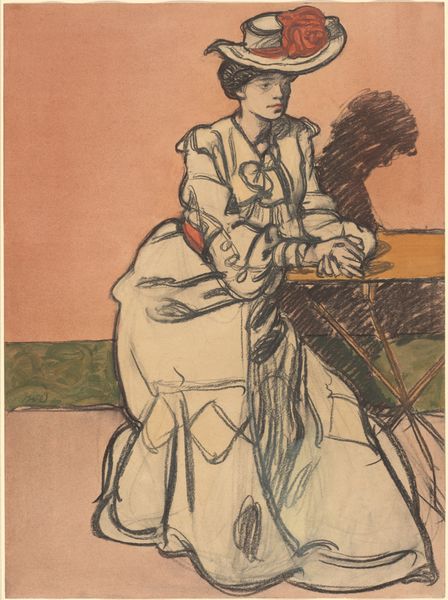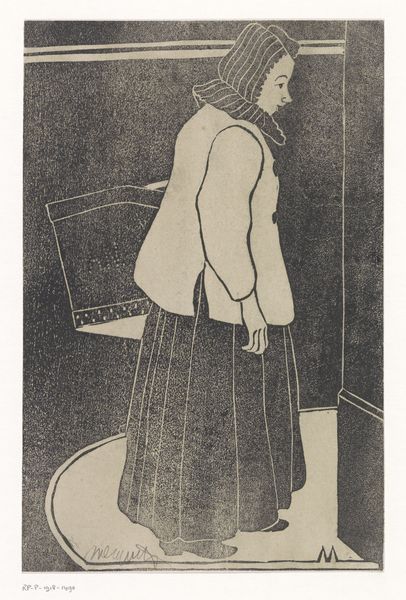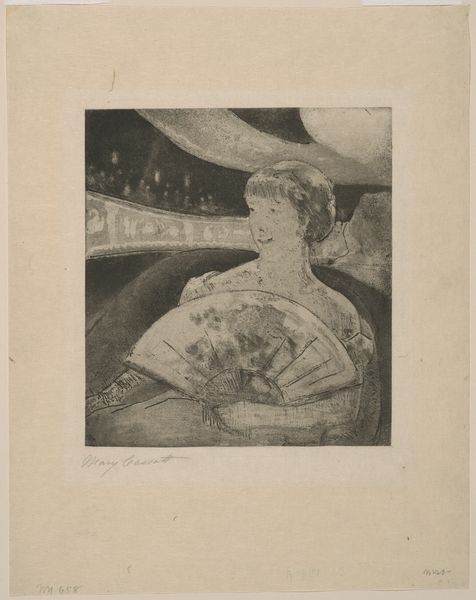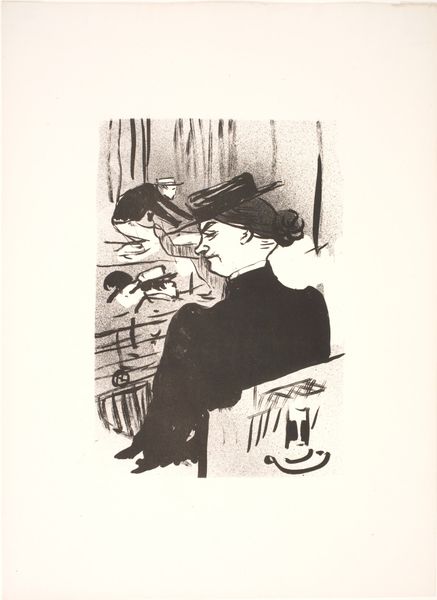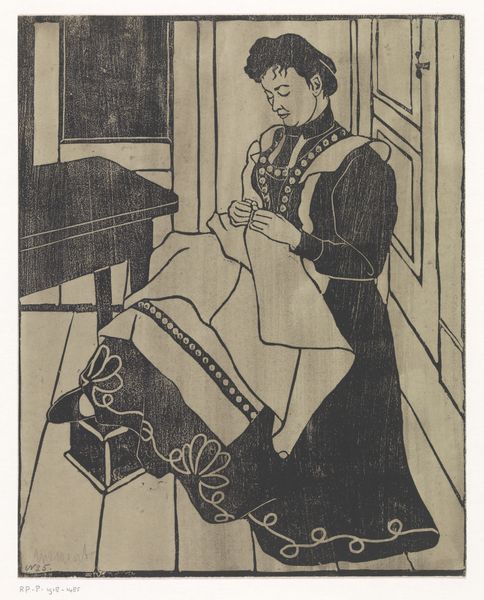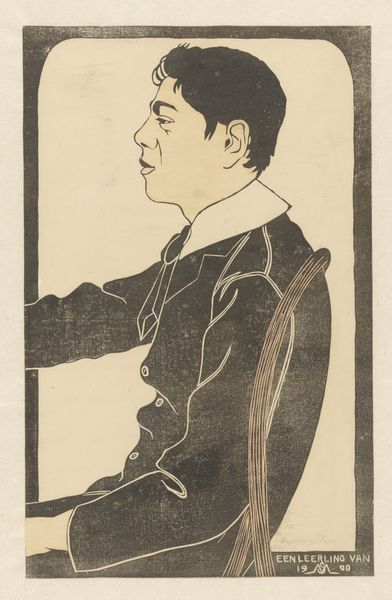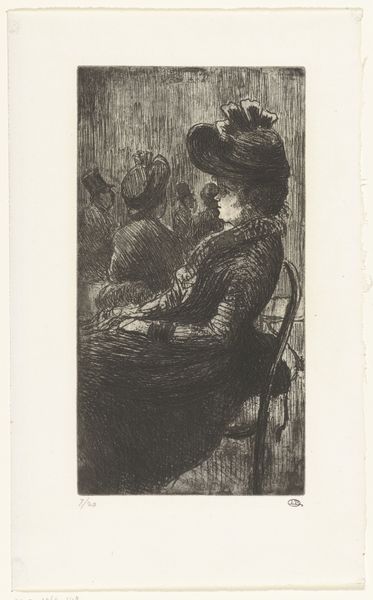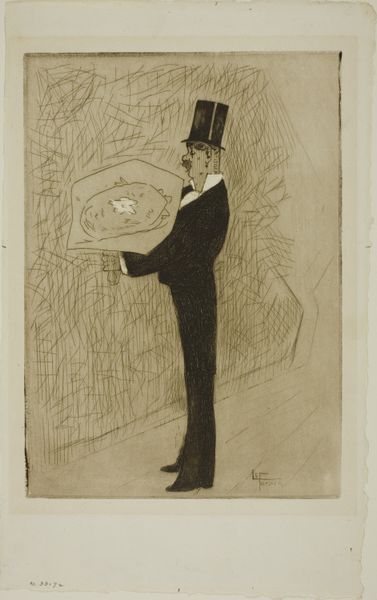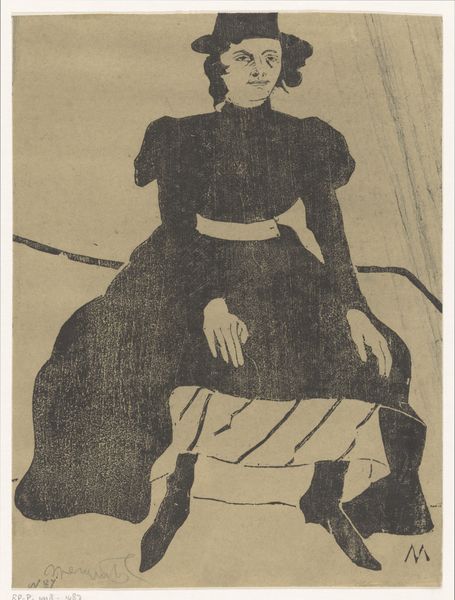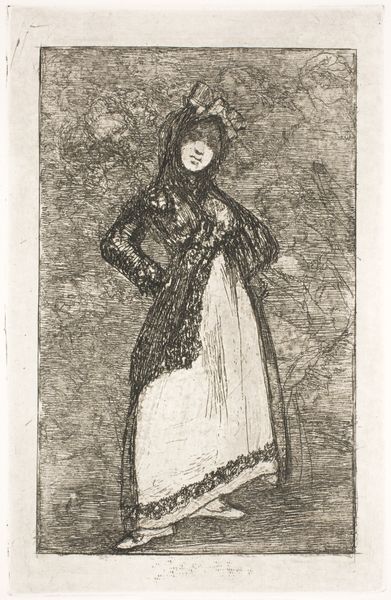
graphic-art, print, woodcut
#
portrait
#
graphic-art
#
art-nouveau
# print
#
pen illustration
#
german-expressionism
#
figuration
#
woodcut
Dimensions: height 210 mm, width 168 mm
Copyright: Rijks Museum: Open Domain
Curator: I’m immediately struck by the dynamism in this image. The strong contrasts between light and shadow convey a sense of movement and dramatic tension, don’t you think? Editor: Indeed. The image you’re referencing is entitled “In de Loge,” dating back to around 1899. It’s a woodcut print by Samuel Jessurun de Mesquita, currently held at the Rijksmuseum. I agree, the bold linework contributes to its striking effect, but let's consider what it might be depicting. Curator: The composition leads the eye directly to the central figure—a woman in a top hat with her arms crossed, gazing towards the opera stage perhaps. It's all rendered in a high contrast, planar fashion typical of woodcuts, with stylized lines delineating her features and clothing. Look at how the hatching creates depth! Editor: It’s fascinating how Mesquita both captures and challenges ideas about class, performance, and gender within theatrical spaces. The female figure, potentially a critique or perhaps an embrace of modernity, occupies the scene but resists direct engagement. How do you see that bold stylistic choice informing your analysis? Curator: The restricted palette of black and white focuses our attention on form. See how he contrasts areas of dense, complex marks against stark, blank spaces? This creates a vibrant push-and-pull that reinforces the tension. The curves of the backdrop behind her feel so very art nouveau, almost swallowing the subjects in the box seats of the theater, but reduced to an audience of specks on a shelf! Editor: Absolutely. Consider the social context: Late 19th century Amsterdam, with its complex class dynamics and emerging sense of a woman's social position and increasing participation in civic spaces like theaters. What narrative could Mesquita be building here through staging this woman so dramatically and giving us that somewhat sardonic eye? Is it a matter of celebration, a portrait of bourgeois vanity, a commentary on the gaze? Curator: Perhaps all those things! The ambiguity keeps me coming back to examine its structural components: how he uses the tools of printmaking to build emotional resonance through the juxtaposition of stark contrasts and intricate details. Editor: Agreed. Through an interrogation of composition and context, Mesquita has made us examine much more than the scene, really hasn’t he? Curator: Absolutely. And seeing how those facets are integrated has made me see the work afresh.
Comments
No comments
Be the first to comment and join the conversation on the ultimate creative platform.

